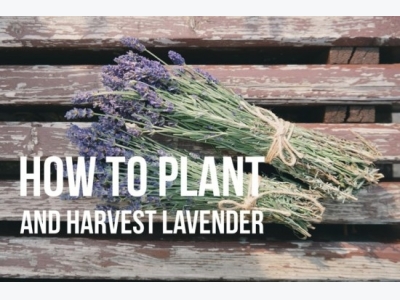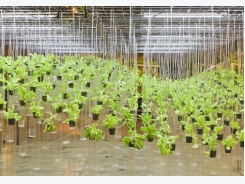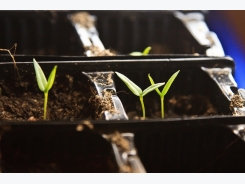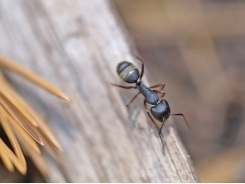How to Plant and Harvest Lavender

For centuries, lavender (Lavendula) has been prized for its beauty, medicinal value and aromatic scent. The ancient Romans used lavender in their baths. During the Medieval Ages, people scattered the blooms through their homes in the hope of warding off disease. An old wives’ story says that couples who spread lavender in their bed linens never argue.
Whatever your reason for growing lavender herb, you’ll find it a satisfying and easy plant to grow. Lavender flowers are native to the Mediterranean region and thrives in hot, sunny climates. Spanish (L. stoechas) and French (L. dentata) lavender, in particular, can’t tolerate cold weather and are hardy only in U.S. Department of Agriculture plant hardiness zones 7 through 9. North of these zones, you can grow French or Spanish lavender as annuals.
In northern gardens, grow English lavender (L. augustifolia) and lavandin (L. x intermedia), which is an English lavender hybrid. Lavandin is a larger plant with flowers that grow on stems that rise above the plant. It produces more oil than English lavender, although the quality of the oil is inferior to that produced by English lavender. Both types of lavender are hardy in USDA zones 5 through 9.
GROWING AND CARING FOR LAVENDER
Plant lavender in spring through late summer from nursery transplants or cuttings. Don’t plant lavender from seed, which may not grow true. Lavender needs well-drained soil to grow well and prefers a soil pH between 6.4 and 8.2. Amend the soil with compost, peat moss or small bark mulch to improve drainage and add lime if your soil is acidic. If your soil is heavy clay, grow lavender in raised beds or pots instead.
Plant lavender where it gets at least 6 to 8 hours of sunlight daily. Although established lavender is drought tolerant, water newly planted lavender at least once per week, or as needed, to keep the soil slightly moist. Mature lavender plants can tolerate drought, but they’ll perform better if they receive weekly moisture.
Fertilize the plants with a balanced fertilizer at planting time – 2 tablespoons 10-10-10 fertilizer per plant. Established plants rarely need fertilizer and giving them nutrients will reduce the quantity and quality of the oil. However, if growth is slow and you don’t care about the oil, fertilize them in the spring when new growth emerges with 2 tablespoons balanced fertilizer.
Prune lavender back by one-third in the spring when new growth emerges. Lavender tends to become woody and the interior of the plants sometimes collapse and die. This annual pruning can keep them healthier longer. Prune the plants again after the first bloom to encourage more flowers. Even with this careful pruning, lavender plants aren’t long lived. Replace them every 7 to 10 years, as growth slows and the centers thin.
Because of its aromatic scent and thick leaves, lavender is almost completely resistant to common garden pests, such as aphids, slugs, rabbits and even deer. In humid climates, it sometimes suffers from fungal diseases. To prevent these, plant lavender so air circulates freely and avoid using overhead sprinklers. The other most common problem is root rot, caused by soggy, heavy soils. The only cure is to improve drainage and lighten the soil.

HOW TO HARVEST LAVENDER
To harvest lavender wands, cut the stems 3 to 6 inches above the base of the plant just before the buds open. Harvested at this time, the flowers are more likely to remain intact. Harvest the plants early in the morning for the best concentration of oils. Gather the stems and wrap them with a rubber band. Hang the lavender bunches upside down in a warm, dry place, such as an attic or shed for two or three weeks, or until they’re completely dry. At this point, you can use them in wreaths or dried flower arrangements.
If you want lavender for potpourri, you can cut the stems after the plants have bloomed. Dry them by hanging them upside down and then brush or shake the flowers off the stems and store them in containers. White and pink lavenders brown slightly when they dry so they’re not particularly pretty in flower arrangements, but they work well in potpourri.
LAVENDER VARIETIES
- ‘Hidcote’ is the classic English lavender, with fine silver foliage and dark purple blooms.
- ‘Sharon Roberts’ rivals ‘Hidcote’ in its performance, but it blooms twice.
- ‘Grosso’ is a fine lavandin variety that grows more than 2 feet tall.
Related news
Tools

Phối trộn thức ăn chăn nuôi

Pha dung dịch thủy canh

Định mức cho tôm ăn

Phối trộn phân bón NPK

Xác định tỷ lệ tôm sống

Chuyển đổi đơn vị phân bón

Xác định công suất sục khí

Chuyển đổi đơn vị tôm

Tính diện tích nhà kính

Tính thể tích ao




 How to Grow a Pineapple Indoors
How to Grow a Pineapple Indoors  How to Control Ants in Your Garden Naturally…
How to Control Ants in Your Garden Naturally…